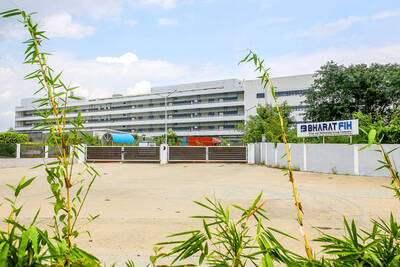Taiwan’s average net wealth per household reached a record NT$18.89 million (US$589,999) at the end of 2023, an annual gain of NT$1.16 million, or 6.56 percent, the Directorate-General of Budget, Accounting and Statistics (DGBAS) said on Tuesday.
The 2023 number, adjusted after re-evaluating land at the market price, included NT$5.76 million in real estate, NT$3.41 million in securities, NT$2.38 million in time deposits and foreign currency deposits, NT$4.11 million in life insurance and pension fund reserves, and NT$2.56 million in cash and demand deposits, the agency said in a report.
The rise in the average household wealth in 2023 was mainly due to a 26.83 percent increase in the TAIEX, which contributed to an increase of NT$610,000 in the value of securities, while the effect of interest rate hikes helped boost the value of time deposits and foreign currency deposits by NT$160,000, the agency said.

Photo: I-Hwa Cheng, AFP
However, soaring housing prices and rising mortgage rates pushed average household debt to a new high of NT$2.42 million in 2023, up NT$110,000 from the previous year, the report said.
In 2023, real estate remained the largest asset category for Taiwanese households, accounting for 30.49 percent of the average household wealth, followed by life insurance and pension fund reserves at 21.76 percent, and securities at 18.05 percent, the report showed.
The continued rise in life insurance and pension fund reserves reflects the increase in the average life expectancy of people in Taiwan, as well as the growth in the income of the labor retirement fund, the report said.
Excluding those, average net household wealth stood at NT$14.77 million in 2023, a gain of NT$1.05 million, or 7.65 percent, from the previous year, it added.
Overall, Taiwan’s gross national wealth was NT$320.48 trillion in 2023, an increase of NT$9.89 trillion, or 3.18 percent, from the previous year, while net national wealth was NT$252.82 trillion, also a gain of NT$5.81 trillion, or 2.35 percent, from a year earlier, the report said.
National wealth statistics represent the current value of all goods owned by households, nonprofit groups, nonfinancial businesses, financial institutions and the government in a nation at the end of a year, the report said.
Gross national wealth is the total value of net assets on current prices owned by the five sectors, while net national wealth represents the assets’ value of gross national wealth with depreciation and liabilities deducted, it said.

SETBACK: Apple’s India iPhone push has been disrupted after Foxconn recalled hundreds of Chinese engineers, amid Beijing’s attempts to curb tech transfers Apple Inc assembly partner Hon Hai Precision Industry Co (鴻海精密), also known internationally as Foxconn Technology Group (富士康科技集團), has recalled about 300 Chinese engineers from a factory in India, the latest setback for the iPhone maker’s push to rapidly expand in the country. The extraction of Chinese workers from the factory of Yuzhan Technology (India) Private Ltd, a Hon Hai component unit, in southern Tamil Nadu state, is the second such move in a few months. The company has started flying in Taiwanese engineers to replace staff leaving, people familiar with the matter said, asking not to be named, as the

The prices of gasoline and diesel at domestic fuel stations are to rise NT$0.1 and NT$0.4 per liter this week respectively, after international crude oil prices rose last week, CPC Corp, Taiwan (台灣中油) and Formosa Petrochemical Corp (台塑石化) announced yesterday. Effective today, gasoline prices at CPC and Formosa stations are to rise to NT$27.3, NT$28.8 and NT$30.8 per liter for 92, 95 and 98-octane unleaded gasoline respectively, the companies said in separate statements. The price of premium diesel is to rise to NT$26.2 per liter at CPC stations and NT$26 at Formosa pumps, they said. The announcements came after international crude oil prices

STABLE DEMAND: Delta supplies US clients in the aerospace, defense and machinery segments, and expects second-half sales to be similar to the first half Delta Electronics Inc (台達電) expects its US automation business to remain steady in the second half, with no signs of weakening client demand. With demand from US clients remaining solid, its performance in the second half is expected to be similar to that of the first half, Andy Liu (劉佳容), general manager of the company’s industrial automation business group, said on the sidelines of the Taiwan Automation Intelligence and Robot Show in Taipei on Wednesday. The company earlier reported that revenue from its automation business grew 7 percent year-on-year to NT$27.22 billion (US$889.98 million) in the first half, accounting for 11 percent

A German company is putting used electric vehicle batteries to new use by stacking them into fridge-size units that homes and businesses can use to store their excess solar and wind energy. This week, the company Voltfang — which means “catching volts” — opened its first industrial site in Aachen, Germany, near the Belgian and Dutch borders. With about 100 staff, Voltfang says it is the biggest facility of its kind in Europe in the budding sector of refurbishing lithium-ion batteries. Its CEO David Oudsandji hopes it would help Europe’s biggest economy ween itself off fossil fuels and increasingly rely on climate-friendly renewables. While